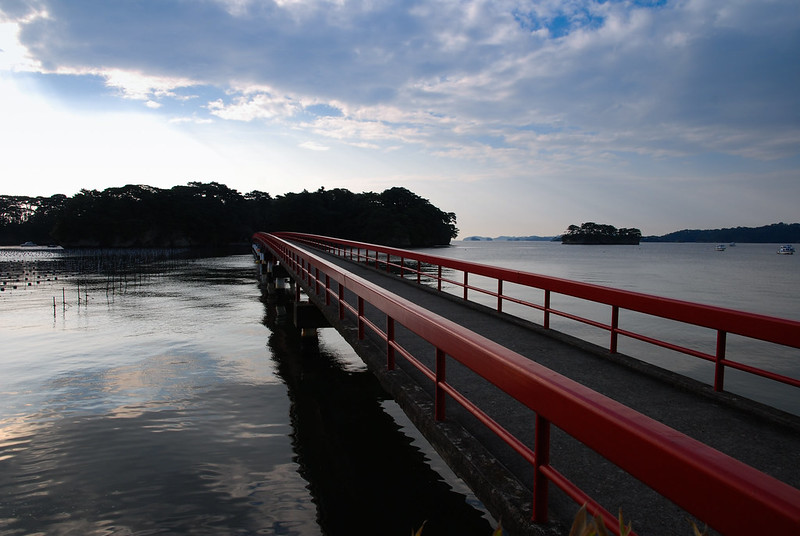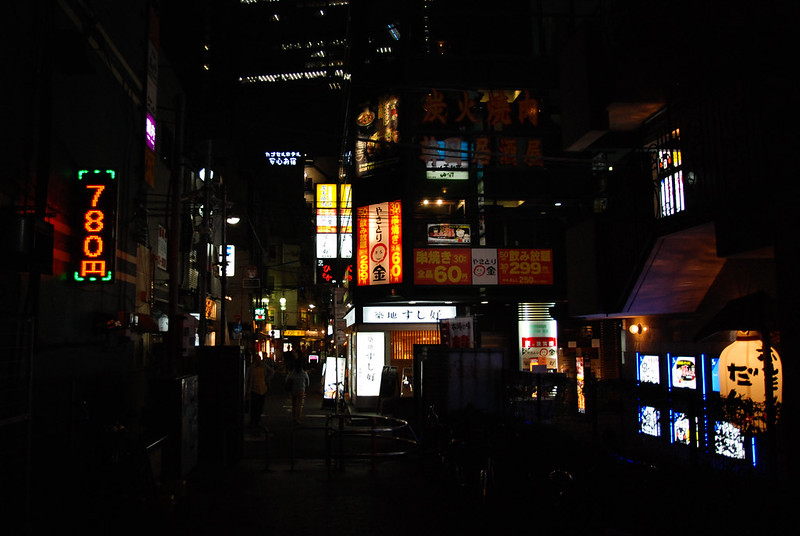Matsushima, near Sendai, Miyagi-ken
I came back from last year’s trip around southern Honshu determined to work on my kanji and head back the next year. One year, one hundred and twenty kanji and three more terms of general study later, I was on a plane to Narita again. And this time, with something approaching a plan.
The Narrow Road to the Deep North
My intention for this year was originally to visit Kyushu, but on reflection decided on Tohoku: it’s a huge chunk of the country that I’d never seen, and is suffering from a lack of tourism in the aftermath of last year’s earthquake. Tohoku hasn’t ever been a huge tourist hotspot compared to, say, Tokyo or Kyoto, but it’s a beautiful place well worth visiting, and needs visitors more than ever. And so, armed with a notepad full of tips – thanks in particular to Clay Harris and Bethan Hutton – I headed north for Sendai.
As before, I’ll run through all the key places I visited in separate posts, noting any information that might be handy to future visitors. But first, general travel stuff.
Trains and Car rental
Last year I used a seven day JR Japan Rail Pass, which is fantastic but expensive: the 14 day version would have blown my £100-ish-per-day budget. This time I could stick to JR East, which is even easier: you can buy a 10 day JR East Pass online for Y32,000 (around £250). This covers you on every train journey from Narita, around Tokyo on the Yamanote line, up to the north, and back to Narita again. Versions that cover five days and four-non-sequential days are also available.
I also tried something new: renting a car in Japan. To do this requires a bit of preparation, as you’ll need a International Driving Permit based on the 1949 Treaty – a truly comical bit of paperwork available either from the AA or major branches of the Post Office. Renting also requires a pretty decent grasp of Japanese, but more of that later. The cost was around £70 for a day, with reductions on subsequent days, for a tiny Toyota.
Shimbashi, Tokyo
Cheap Hotels
For accommodation, I mostly stuck to the same plan as last time: cheap business hotels that run to £50-60 per night. This time I tried as many chains as possible, and found the following:
Sunroute – I used a load of these in 2011 and 2009, too. Classic business hotel service, with prices between £45 in the sticks and £110 in Tokyo. The price is always representative of what you get: the Plaza Shinjuku, for example, is expensive but flashy, while Higashi-Shinkuki is older and less smart but cheaper, and Nara costs almost nothing but is a bit knackered. You can reserve online via the website without putting any payment down in advance – in English, if you wish.
JAL City – These aren’t quite normal business hotels – you pay on checkout and there are minibars in the rooms, although in practice that just means you pay more for a beer or bottle of water. They are, however, really nice for the money – usually £50 or so if you book in advance. The website is a disaster that’s pretty hard to understand (a million and one options), so reserve on the phone or through a third party site.
Toyoko Inn – You cannot miss the Toyoko inn in any town: it’ll be right by the JR train station, or have a giant blue light on the top, or usually both. And it’ll be cheap: £35-50. I’ve only stayed in one, which was a little worn, but fine for the money. I’d recommend if you can’t find a JAL or inexpensive Sunroute.
Super Hotel – Ah, the Super Hotel. I’ve stayed in only one, which was pretty new, but not super. On the plus side, these are ultra cheap: £30-40 or so, and you get a small room with a capsule bathroom. On the downside, my experience was a tiny room that stank of smoke (not the only smoking room I stayed in, but the only one I regretted), and about four hours of sleep. You get what you pay for.
I tried to reserve as many as possible on the phone – I need to work on my speaking – but JAL, Toyoko Inn and Super Hotel are all listed on the English-language reservation service Japanican.com. Sunroute’s own website is better.
Internet Access
Travel guides can be pretty useless when it comes to Tohoku. In the latest Lonely Planet, published just after the quake, it’s a black hole – presumably ninety percent of the chapter was pulled at the eleventh hour. This makes internet access particularly handy for checking trains, sizing up hotels and so on.
Every business hotel I stayed in had free, fast, working internet access – but only the Toyoko Inn had WiFi. This makes having a cheap netbook computer invaluable. This will just plug in, and you can use the free tool Connectify to create a local hotspot for your mobile phone.
I also used 3G on my iPhone. To do this, buy a B-Mobile temporary visitor SIM card online – a 14 day one costs around £35 if purchased from outside Japan, and you can simply request delivery to your first location in Japan. It connects to 3G only – no voice or SMS services, but iMessage works – on the NTT DoCoMo network, which has good coverage. The service speed is limited, but good enough for email, web and occasional Google Maps when utterly lost.
A warning, though: on switching SIM cards my iPhone 4S reset and required re-registration via WiFi. Fortunately I could hook it up through my laptop (see above), but if that option isn’t available you could be left with a useless, bricked phone. Thanks, Apple.
Anyhow, I paused one night in Tokyo to collect the SIM card, eat some noodles and indulge in a jetlag-busting onsen. With that done, on to Sendai.


Leave a Reply
You must be logged in to post a comment.